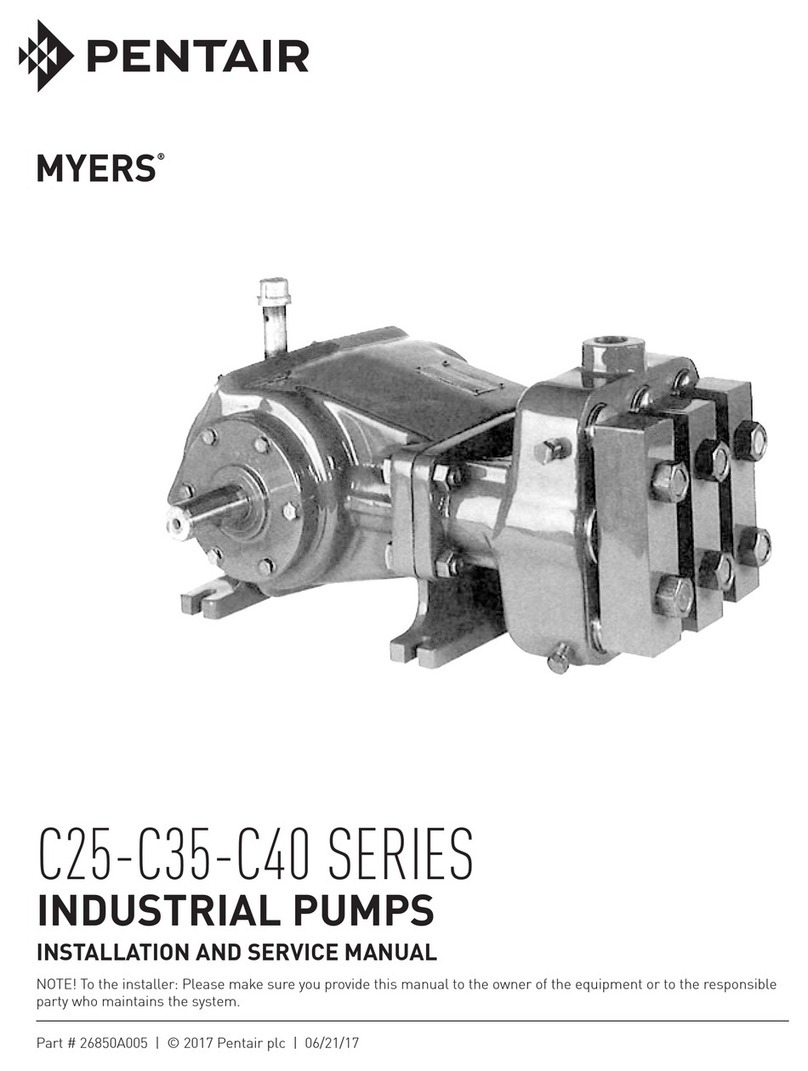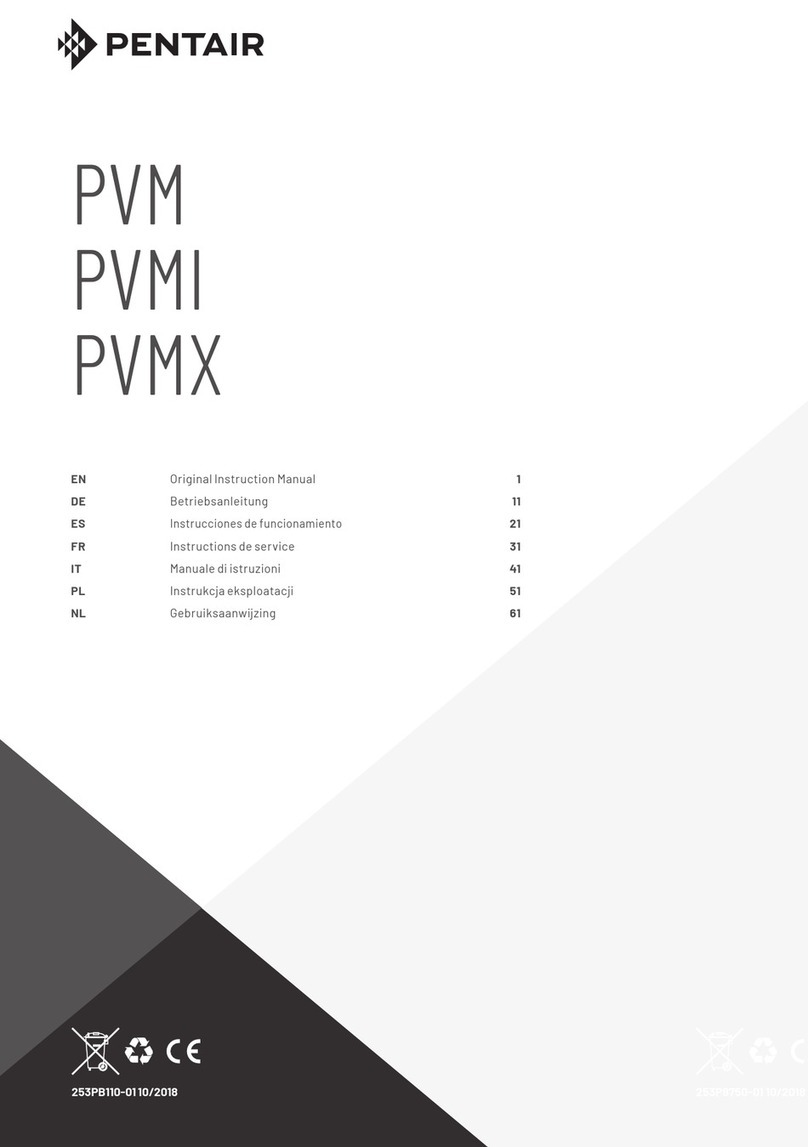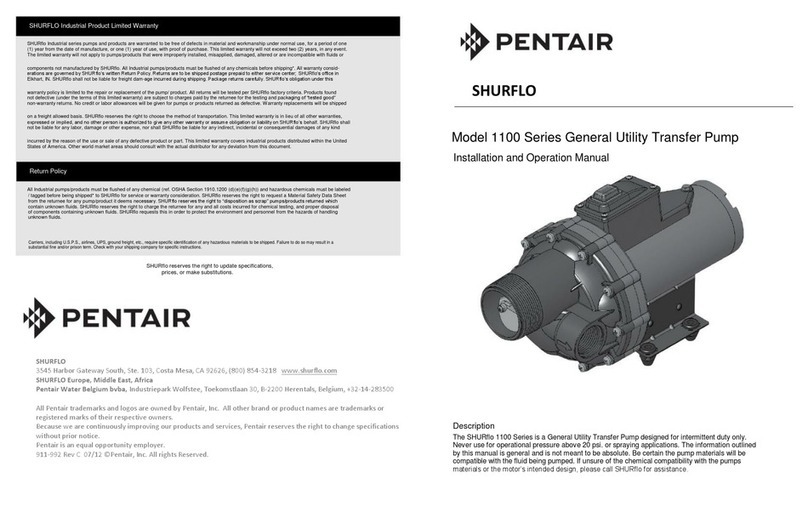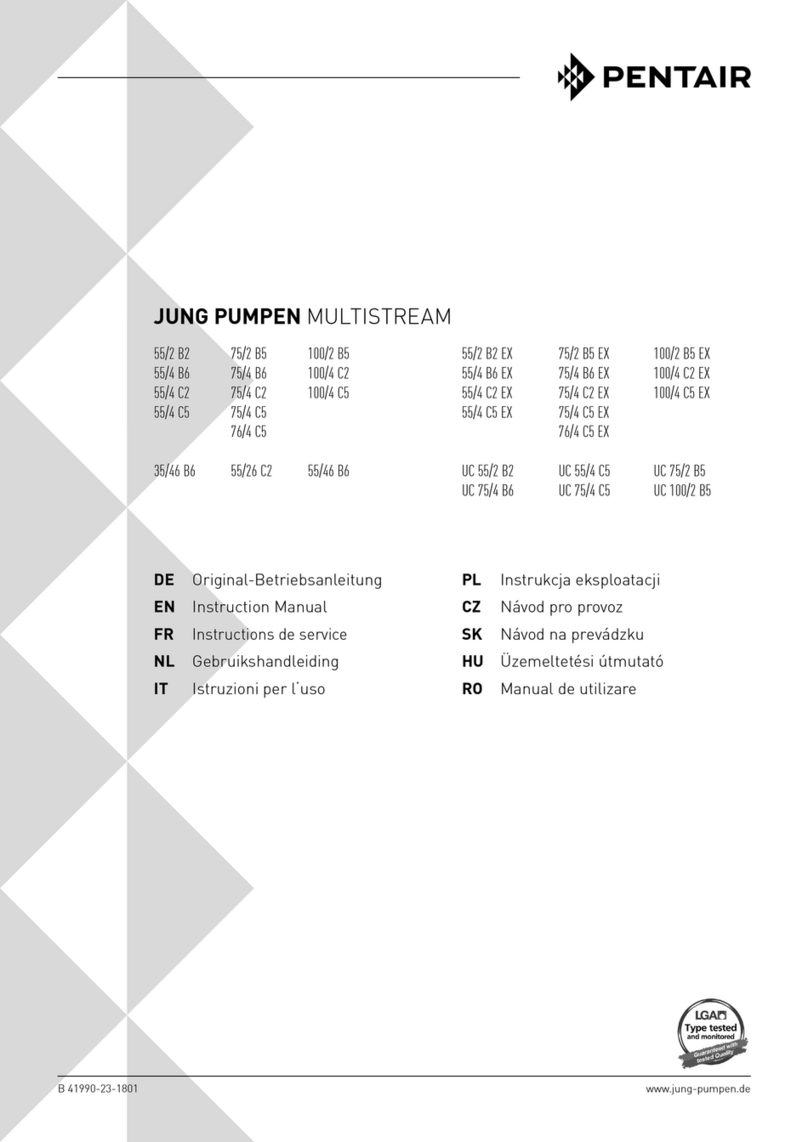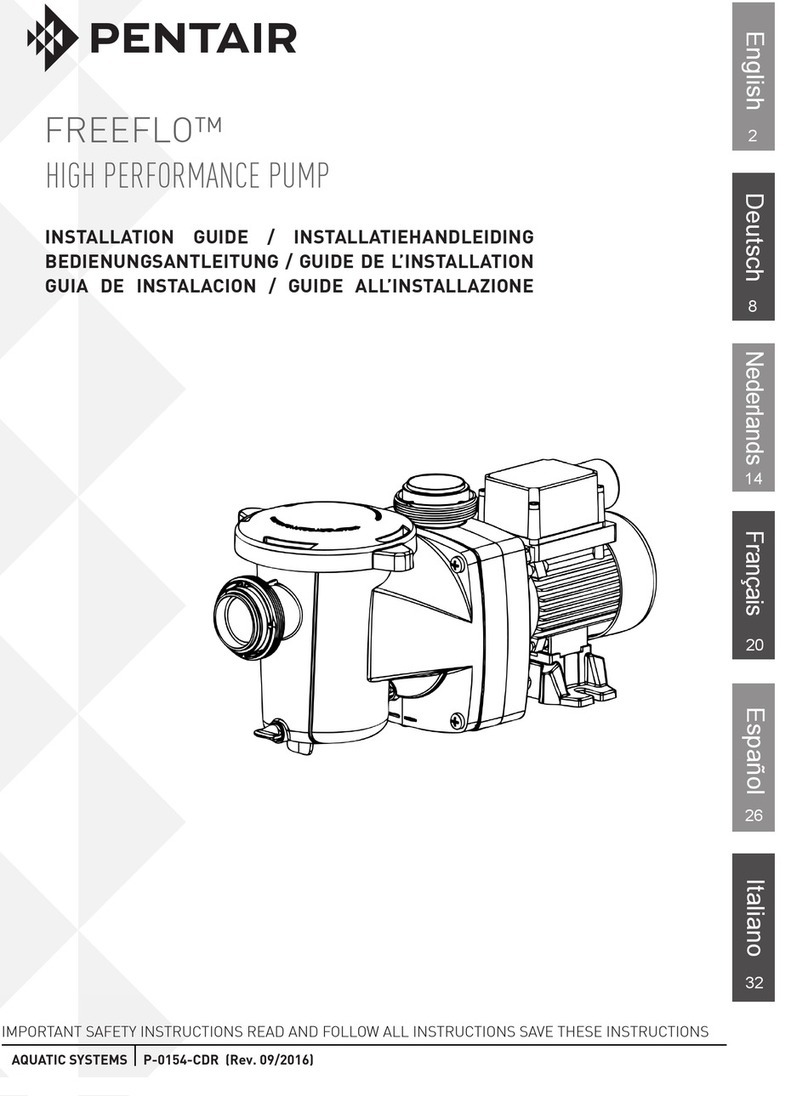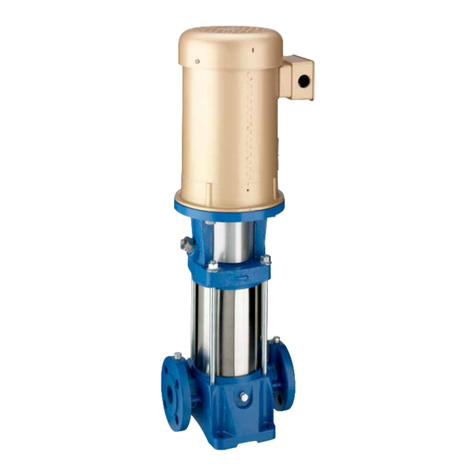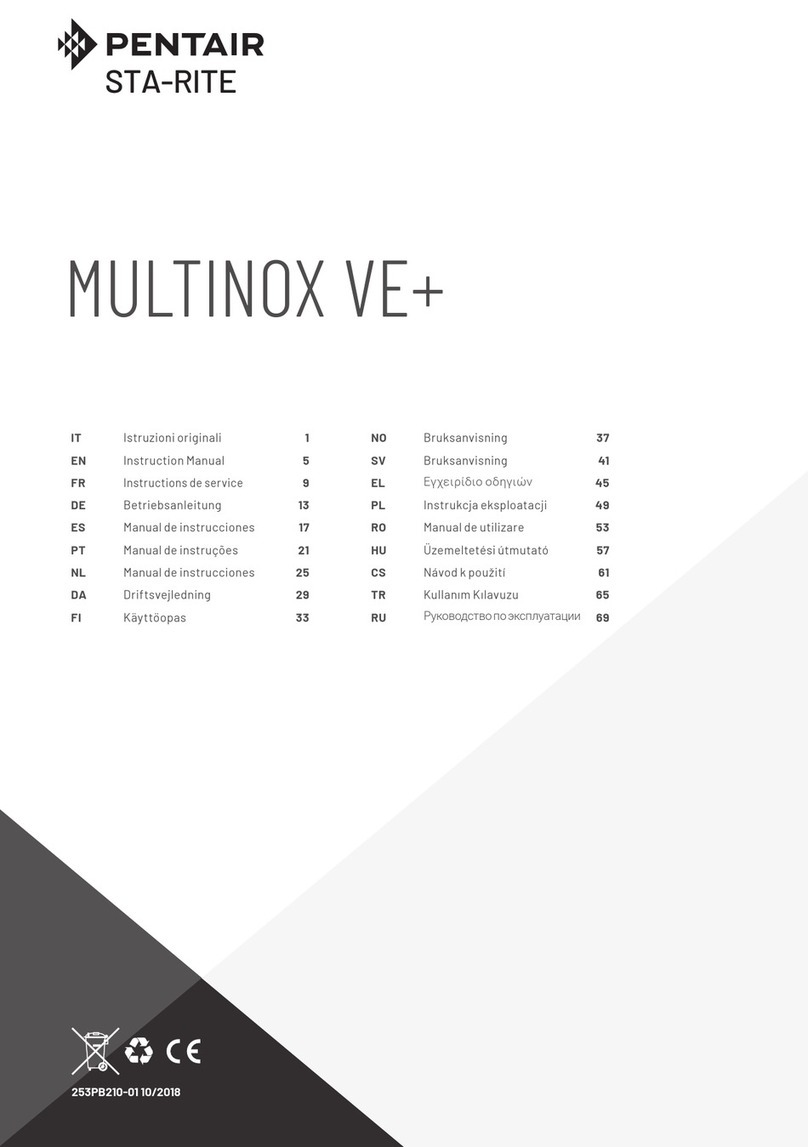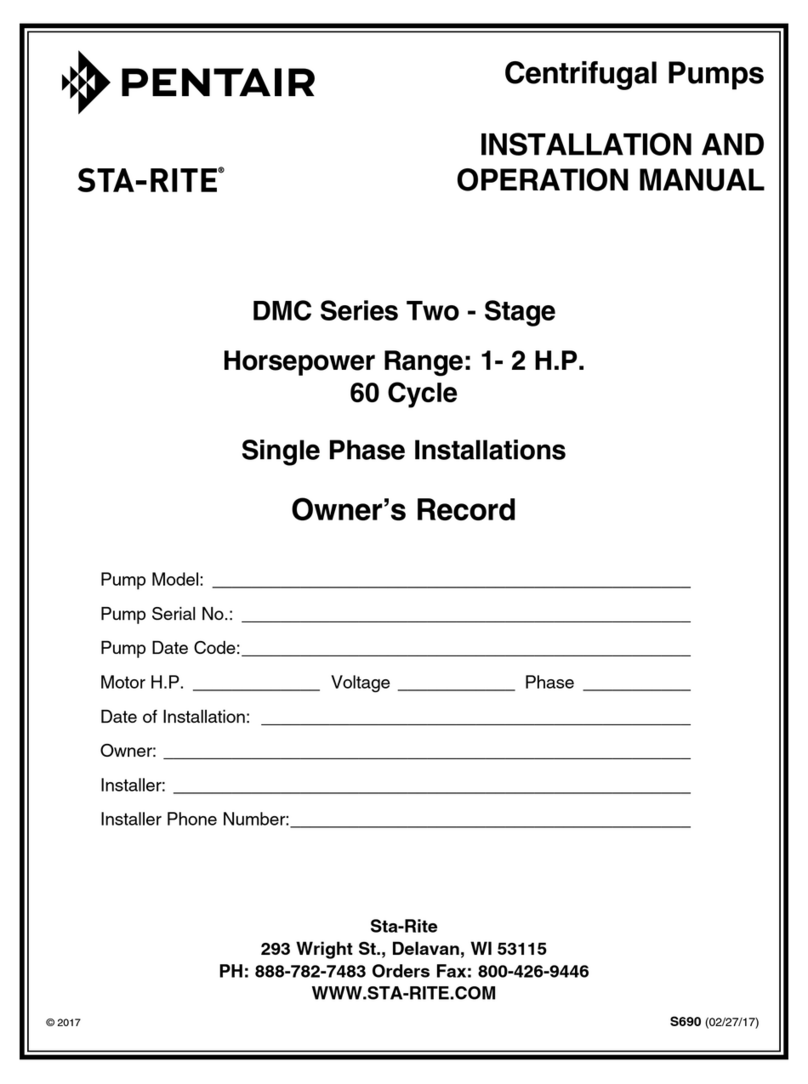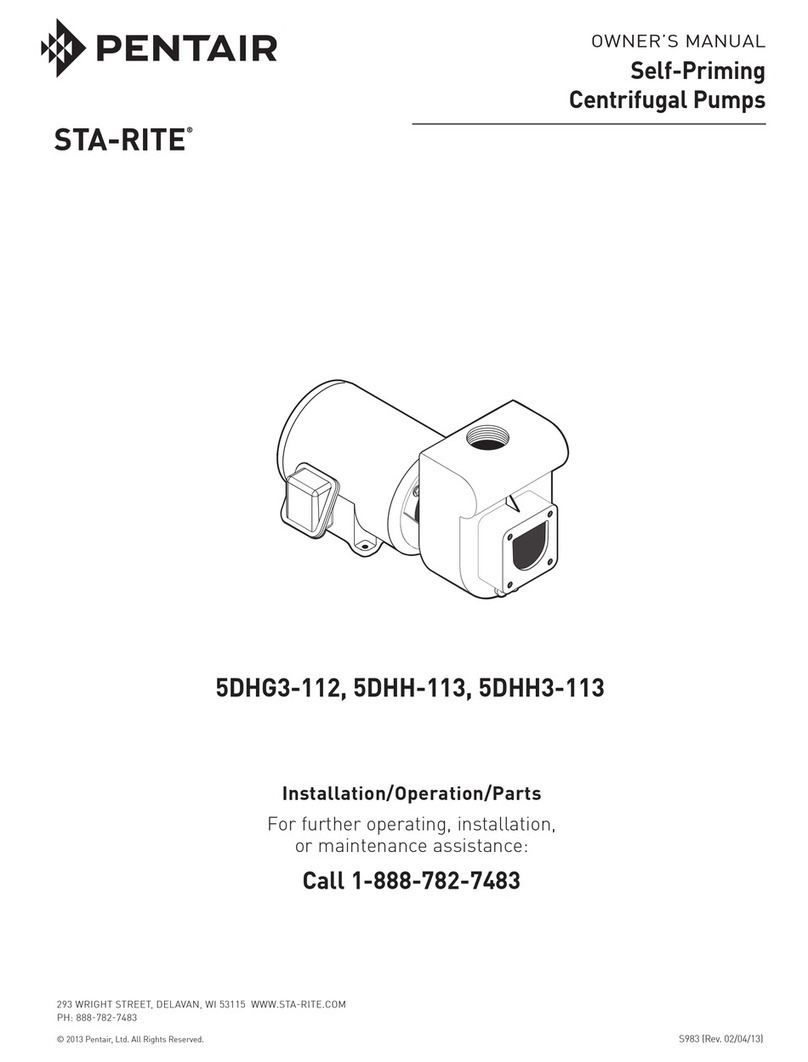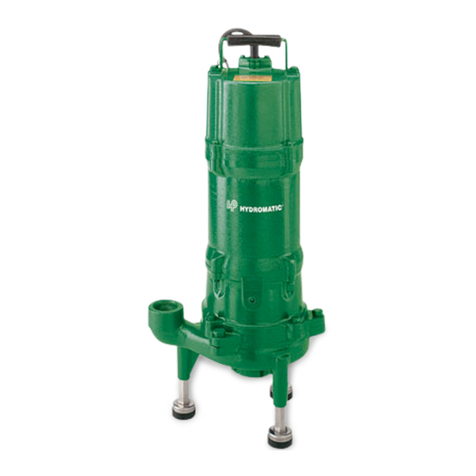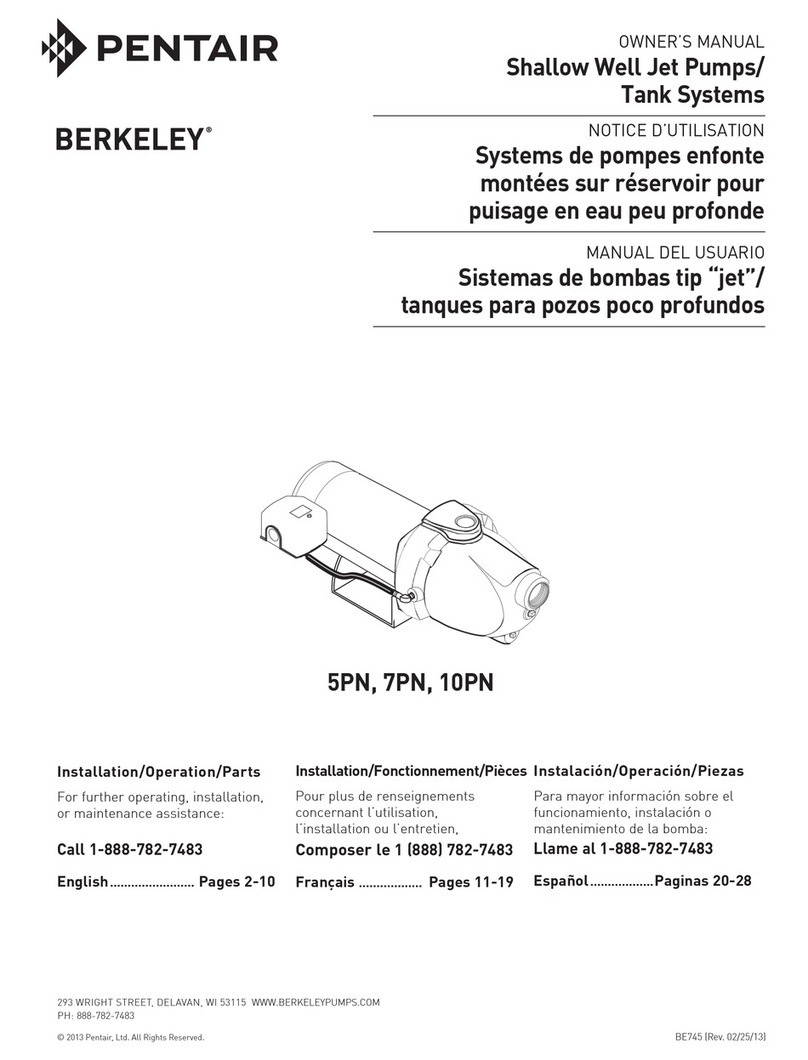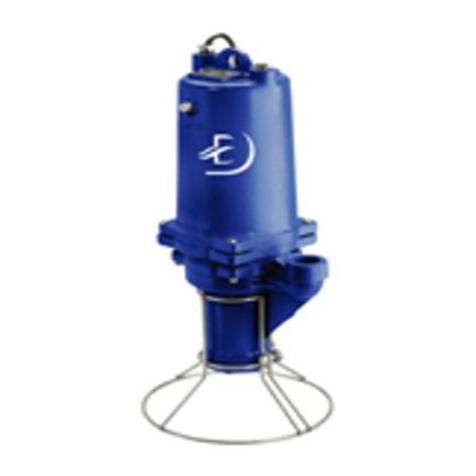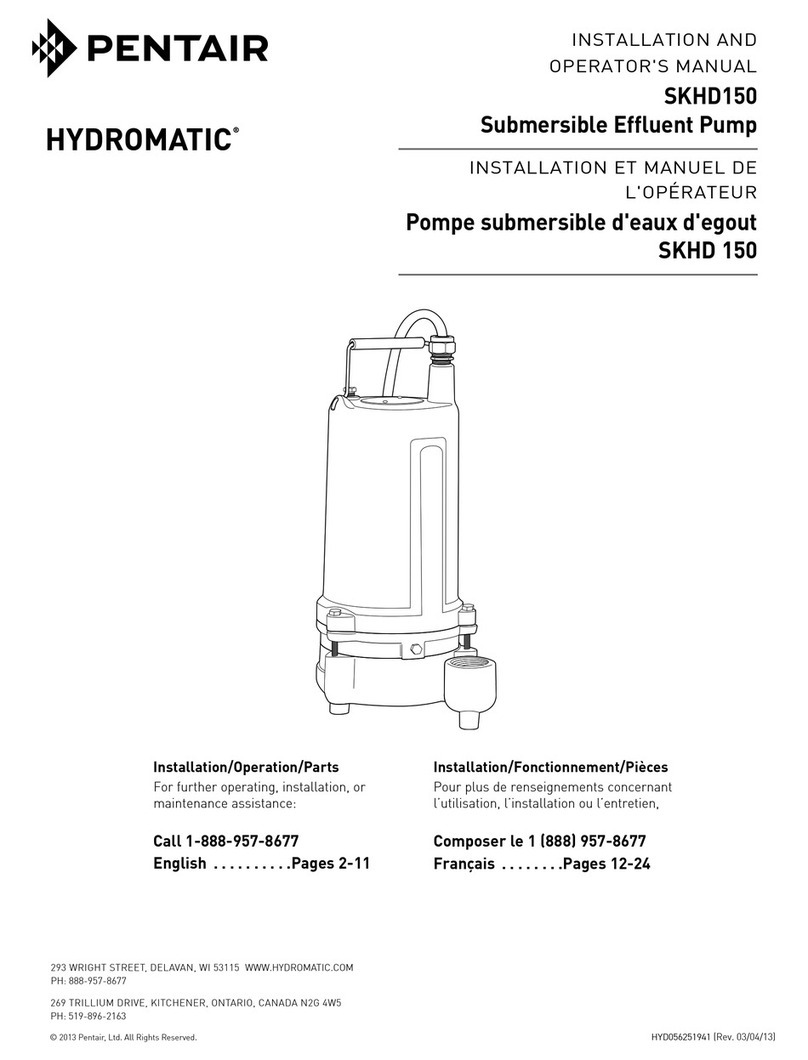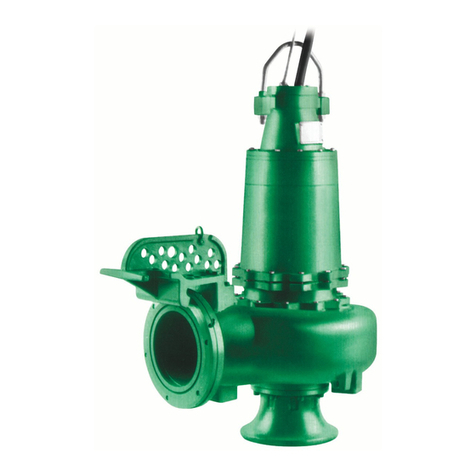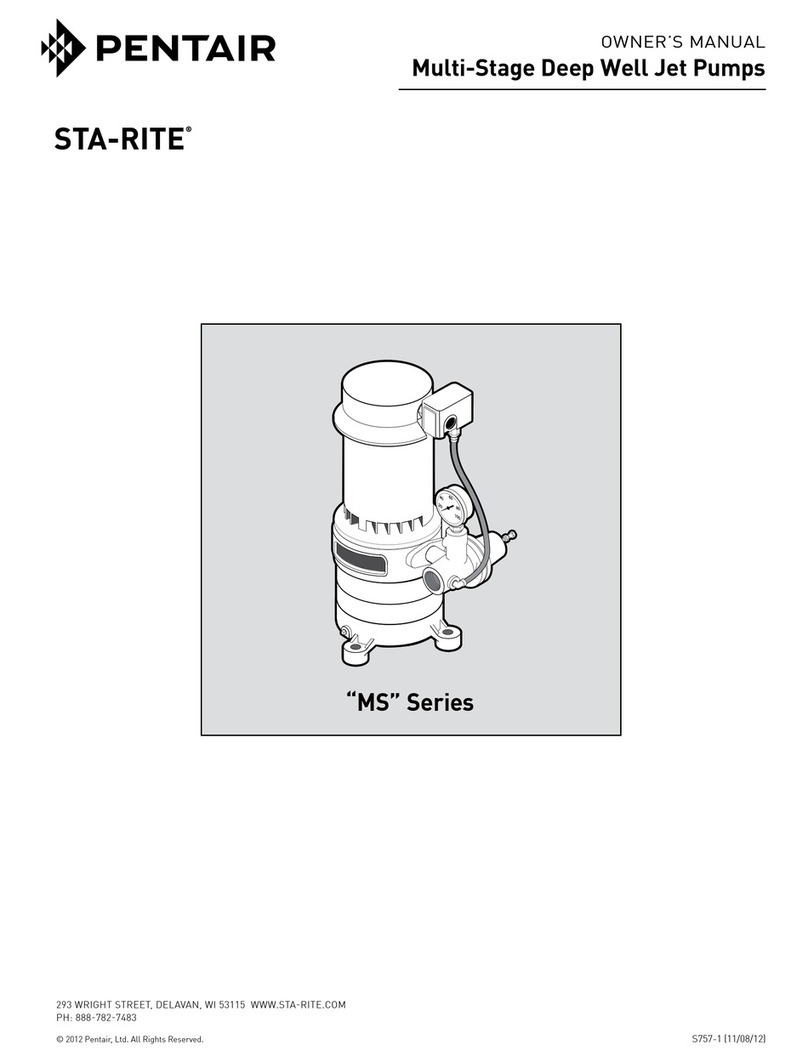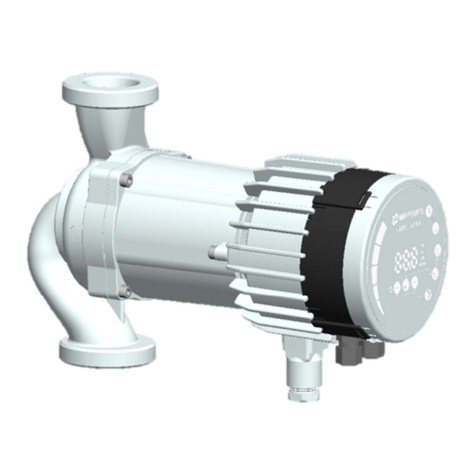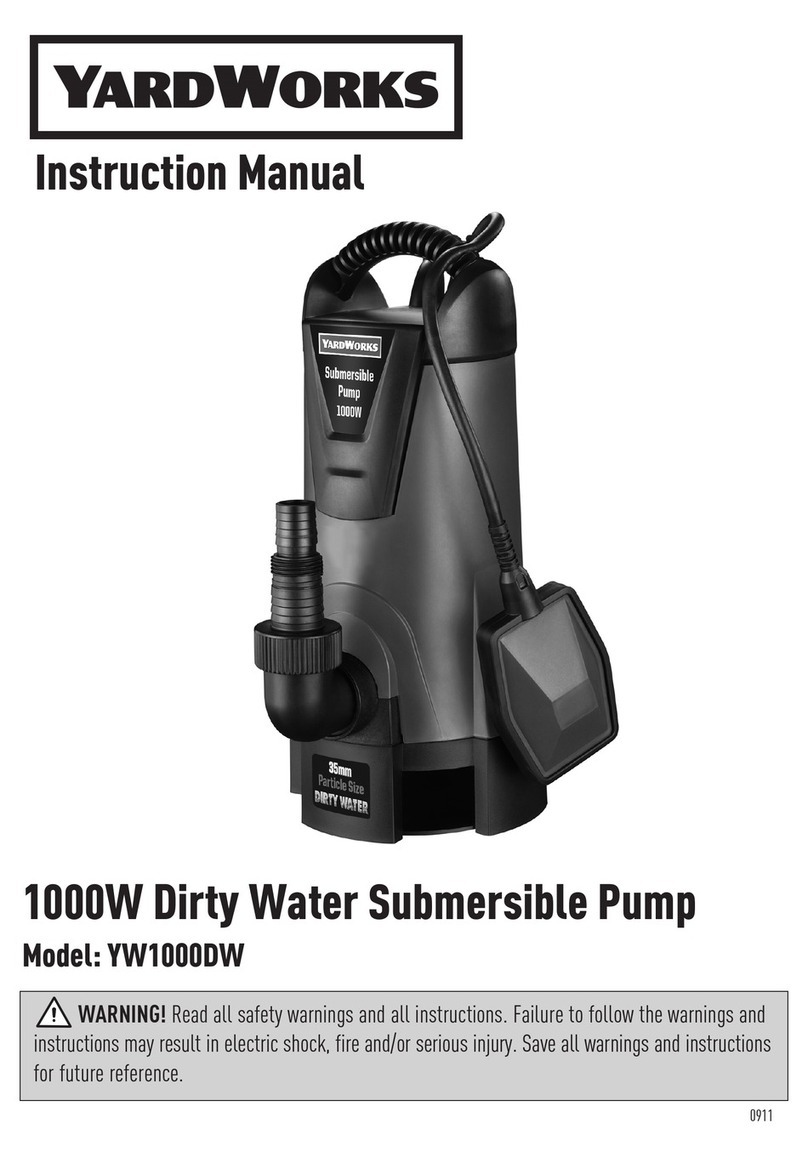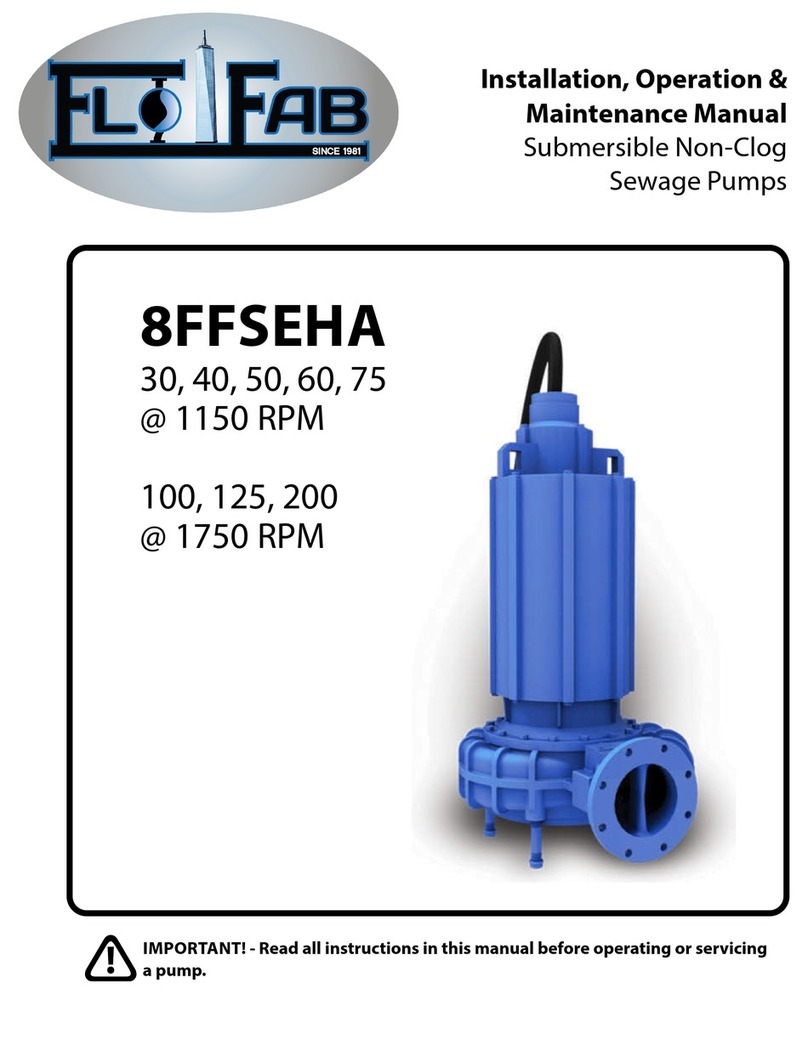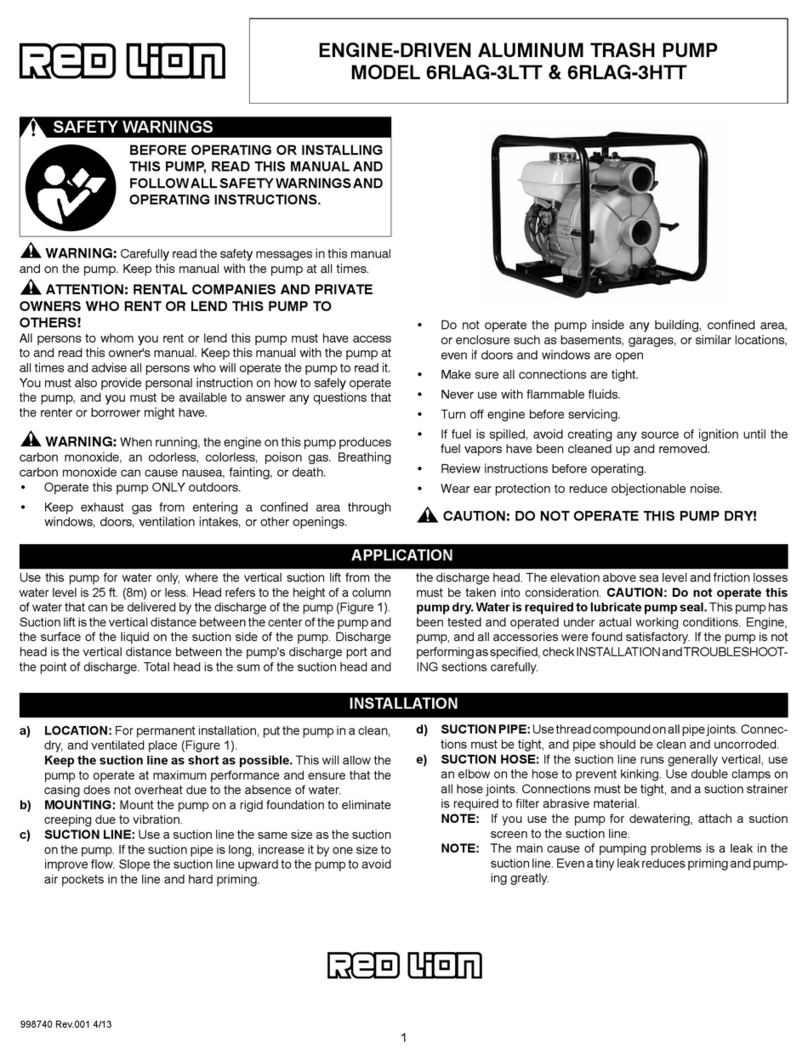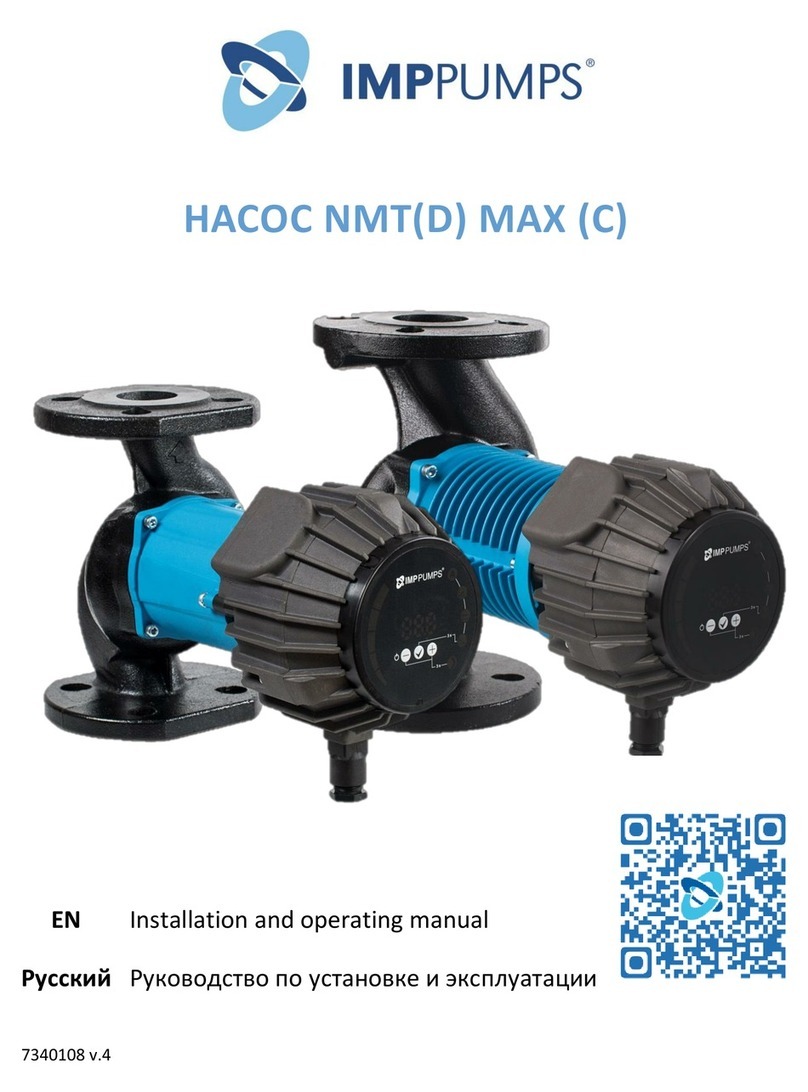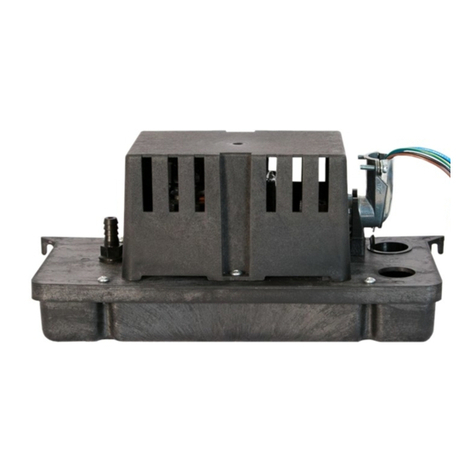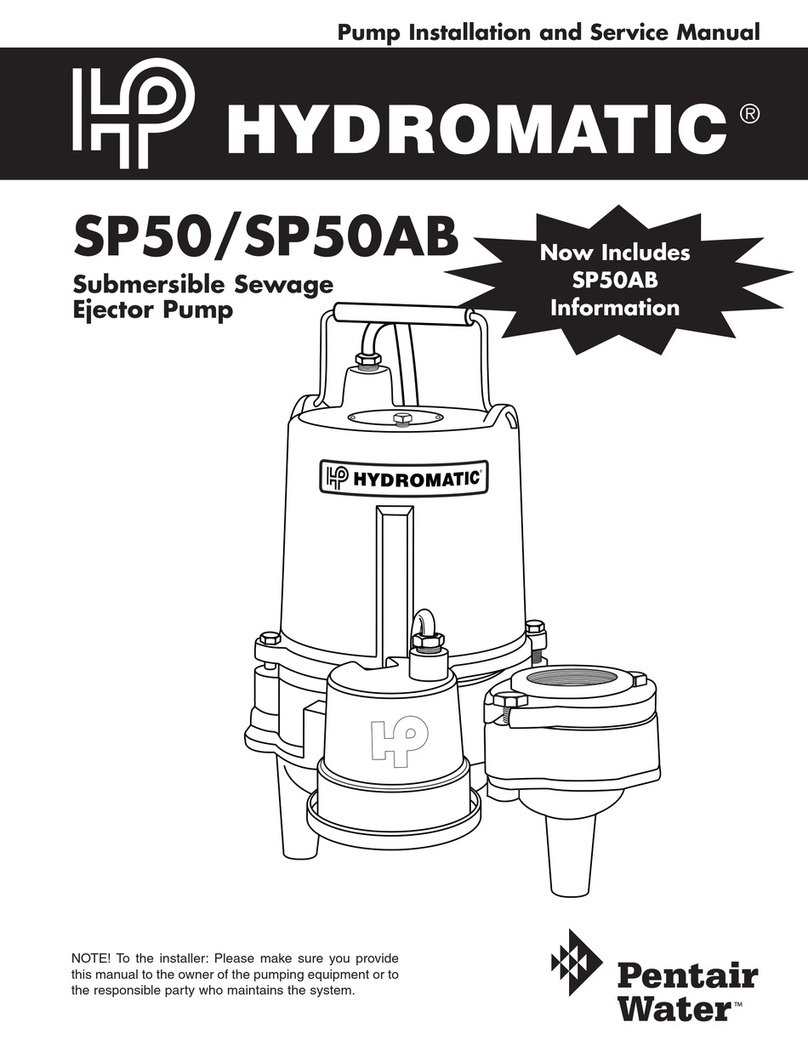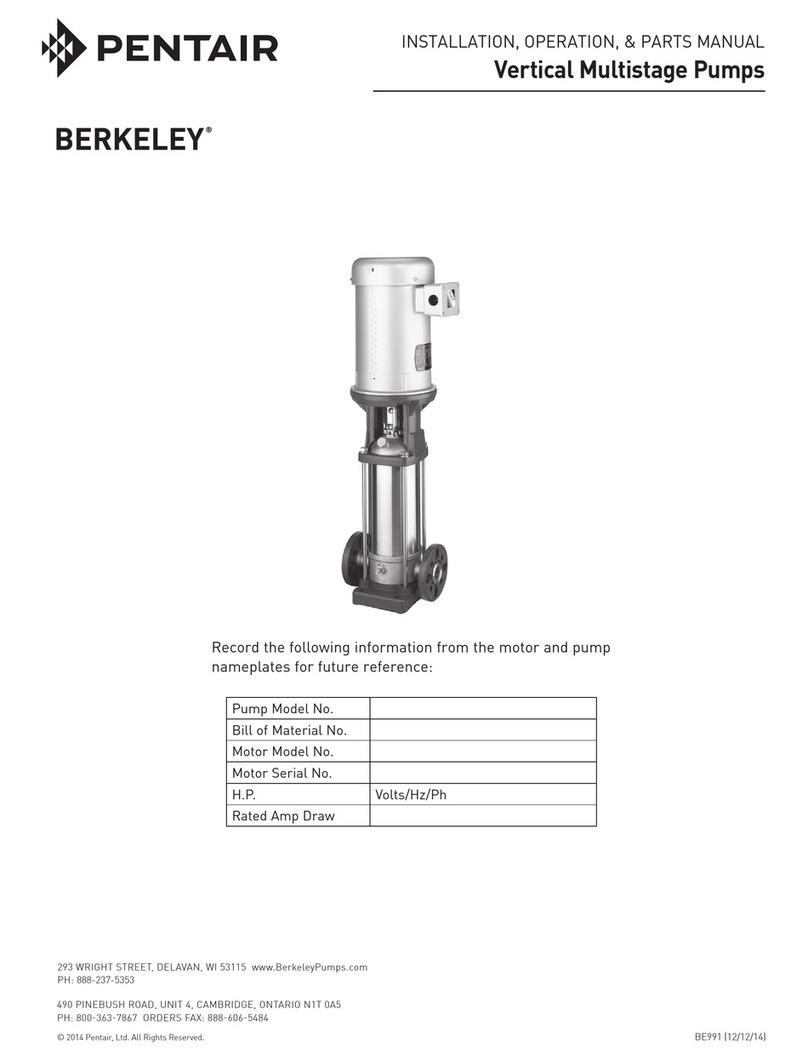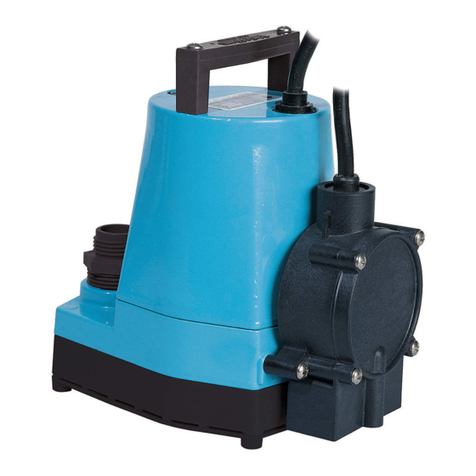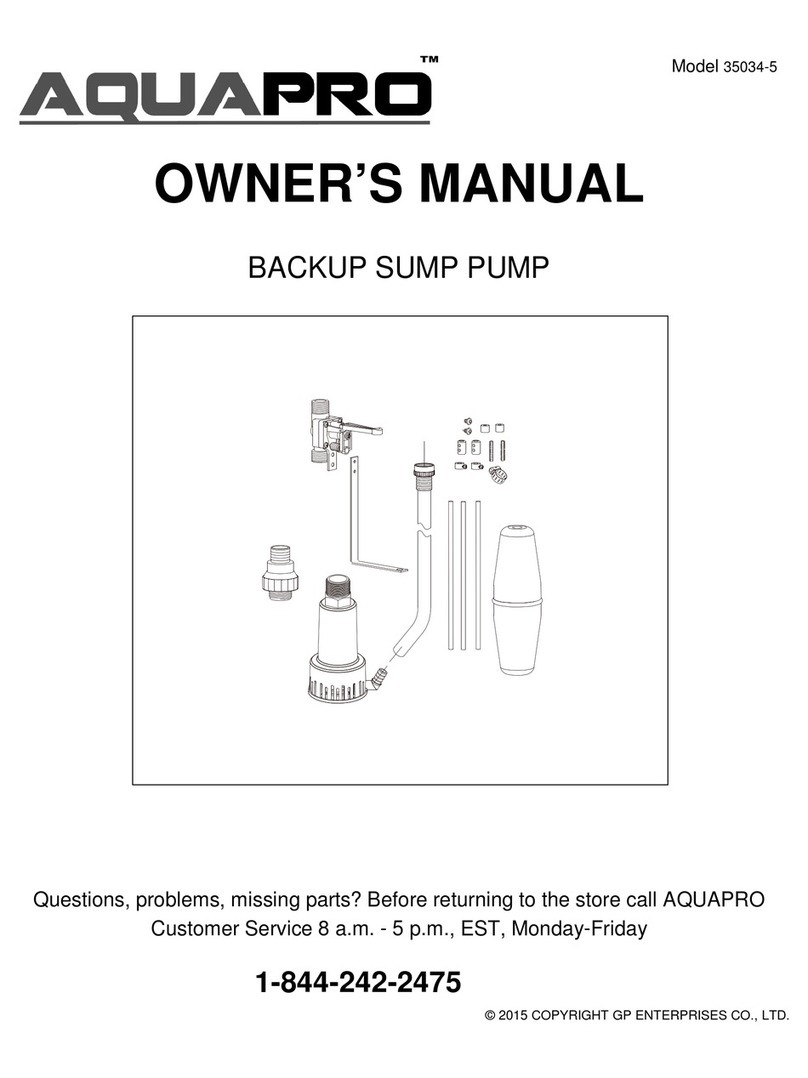
9
or snubber. Consider a liquid filled gauge.
(Scale range to be double the normal pump
operatingpressure.)
Locate the relief valve and pressure gauge ahead of
any block valve and so that the pressure in the pump
is always reflected at the relief valve. The relieving
capacity of the relief valve must exceed the capacity of
the pump to avoid excessive pressure while relieving.
Use a full size relief line.
To minimize vibration (whether hydraulic or
mechanical), discharge lines should be kept short,
direct, well supported and solidly anchored. Avoid
“dead” ends and abrupt direction changes.
BYPASS PIPING
Some designers ignore this important aspect of proper
design of pump piping systems.
A reciprocating pump, especially after maintenance of
the valves or plungers, starts with one or more fluid
chambers full of air. Pumps operating on propane,
butane, or other volatile liquids start with vapor in the
fluid chamber(s).
Positive displacement pumps do not automatically
purge themselves of air and gas after shutdown.
For example, a quintuplex plunger pump will, after
servicing, expel the air in four of the five pump
chambers. Thus, the pressure from four of the
“active” cylinders will keep shut the discharge valve of
the “inactive”, or “air bound,” cylinder. Then, the air or
gas in this cylinder will be compressed and expanded
by its reciprocating plunger and never leave the
chamber. Similar effects occur in duplex and
triplex pumps.
To overcome these difficulties, adequate provision for
expelling the gas in the “air bound” cylinders must
be present. Common practice is to totally relieve the
pump of all discharge pressure during the start-up,
after servicing.
Consider the operational advantage of a full-sized
bypass line (return to tank) which substantially
removes discharge pressure from all cylinders during
the start. This requires a block valve on the discharge
side and a full opening bypass valve on the other side.
For economy, the bypass (to tank) can be combined
with the relief valve discharge line. This line must be
full-sized, well supported, and sloped downward to
avoid freezing in cold weather. (A frozen relief valve
line provides no protection to either the pump or
operating personnel!)
The ability of a reciprocating pump to be “self-priming”
depends on the ratio of the swept (displaced) volume in
the cylinder to the unswept (clearance) volume at the
end of the stroke. This depends on the design of the
fluid end and on the plunger size selected.
Choice of the largest size plunger for a particular
fluid end improves this compression ratio and so
leads to “self priming”, or easy priming. Choice of the
minimum size plunger sometimes leads to difficulties,
especially with pumps that require frequent servicing,
or which handle volatile liquids, or which contain
substantial amounts of dissolved air or gas. An
automatic bypass and purging system for these
applications may be merited.
LUBRICATION
Myers, Aplex Series pumps use S.A.E. 40 wt.
nondetergent oil in the crankcase. This oil requires
only a nonfoaming additive and should possess good
water separation (antiemulsion) characteristics.
Such oils are often labeled “industrial” or “turbine”
quality lubricants. If these oils are not available, a
good quality gear oil or EP oil may be substituted. See
lubrication guidelines.
In temperate climates, oil viscosity selected should
fall between 70 and 84 seconds Saybolt viscosimeter at
210º F. In arctic service, low pour point oils
are needed.
After the first 500 hours of operation in a new pump,
drain the oil. Refill with clean, fresh oil. Thereafter,
change the oil every 1,500 hours or sooner if it
becomes contaminated with water or dirt. Fill to the
center of the sight gauge. Recheck after starting,
adding oil to center of gauge while running.
The oil capacity is 9 U.S. quarts.
V-BELT DRIVE
A properly designed, well-aligned V-belt will provide
years of reliable, economical service if properly
tensioned and kept dry, free of oil and ventilated.
Alignment is critical for long life. If the shaft axes
are not truly parallel, or if the sheave grooves are not
positioned in good alignment, some belts will carry
most of the load, resulting in their disproportionate
load share and may actually twist or turn over in the
groove. Use a straight edge across the rim of the
sheaves to detect and correct for misalignment.
After about one week of operation, new V-belts will
have stretched somewhat. The motor must be moved
on its slide base to re-establish proper belt tensioning.
Insufficient tension results in slippage, burning,
squealing (especially during starting) and shortened
belt life. Overtightening imposes excessive loads on
pump and motor bearings and can cause early shaft
fatigue failure.




















